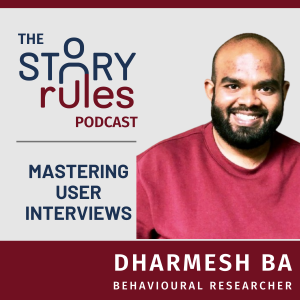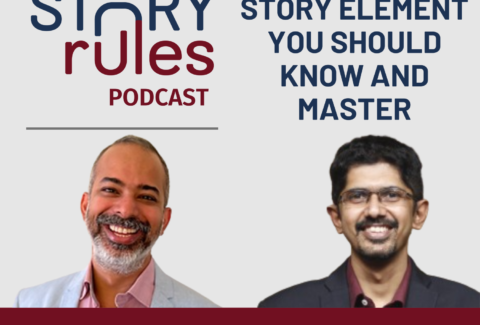You can ‘engineer’ any data story using this tool
We had looked at a detailed post on story narrative earlier, which involved the use of the Pyramid Principle. However I felt that such an important construct needed a separate post of its own. So here goes.
Pyramid Principle: The tool that McKinsey uses to build a story
Is business storytelling an art or a science? As with most such questions, the answer is: “a bit of both”.
But the most fascinating proponent of the “it’s all science” theory is a Harvard-grad and ex-McKinsey consultant called Barbara Minto (probably the most important person in storytelling not to have her own Wikipedia page). Minto developed what’s known as the Pyramid Principle (or Minto’s Pyramid Principle): a deceptively simple to understand and yet surprisingly tough to master storytelling tool.
In this post, we will look at:
- What is the Pyramid Principle (with an example)?
- Why is it needed?
In a follow-up post, we will look at an example of applying the tool on a business news article.
An example to understand the Principle
The Pyramid Principle is a tool used to “organise” or “structure” messages in any communication: it could be a presentation, report, email, or even a formal conversation.
It is best explained with a simple example. Let’s say you are a fan of podcasts and are writing a blog post on the topic, and here’s your unstructured first draft (which is like a thoughts-dump):
“I must tell you about this recent discovery of mine – podcasts! I believe they are the best thing since sliced bread. The other day, while taking a walk, I was listening to this fascinating episode on the Bengal famine by Malcolm Gladwell in his Revisionist History podcast, and I was blown away. Man, I can’t believe that all podcasts are free!
Another superb episode that comes to mind is by Radiolab on CRISPR, the gene-editing technology. Boy those guys can spin a great story.
There are many other interesting podcasts spanning a wide variety of topics. For example if you are a history buff, you should try out Hardcore History by Dan Carlin; for politics and current affairs, Fareed Zakaria is highly engaging, while Freakonomics is great for behavioural economics.
A big advantage of podcasts is that you can bundle them with other activities, like I do with my morning walk.
Many podcasts also feature interviews of leaders from various fields: politics, sports, science, media. It is a great way to keep yourself updated of the latest in these fields; and learn about new topics.
And oh, you can also listen while commuting to work – what a great way to spend those empty hours… Of course you can download episodes over WiFi and listen offline.
Plus, did I mention they are free?! Good content is no longer offered free in many cases – most good news websites now have paywalls and audiobooks can be quite expensive”
**
In the above piece, while you would get the gist, you’ll notice that the content itself is all over the place. If I were to ask you to close your eyes and re-tell the post’s contents to an imaginary friend, you may not remember all the points. That’s not something you’d want happening to your critical communication sent to the boss/client.
Which is where the Pyramid Principle comes in. Let’s look at the statements and start organising them under 3-4 buckets.
Organising ideas into buckets
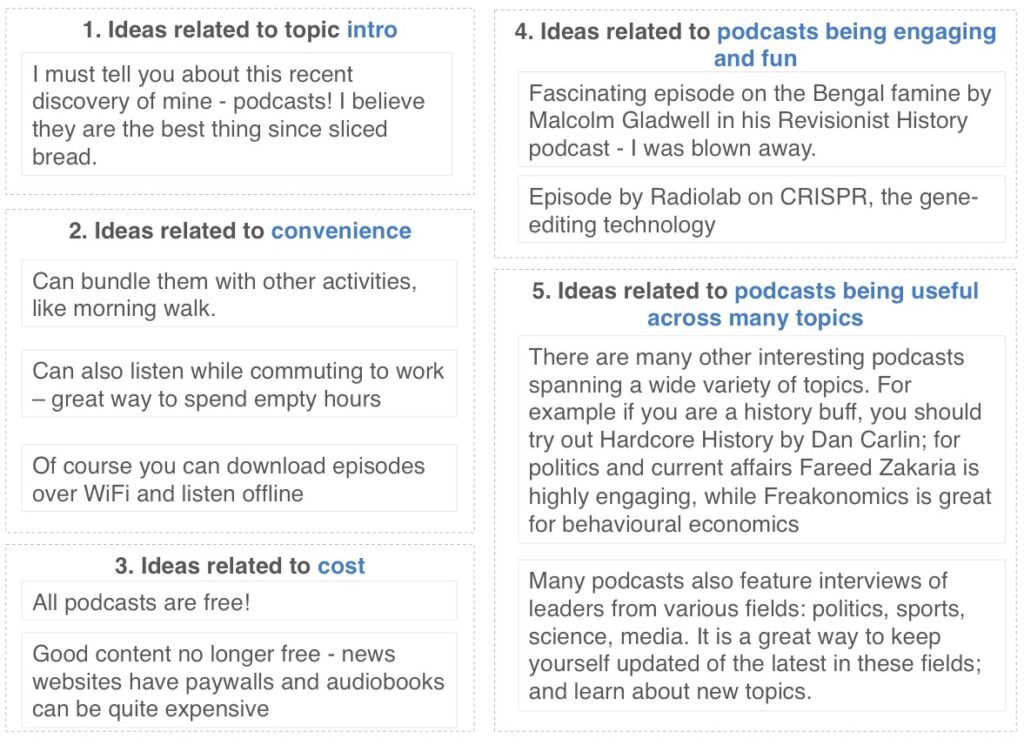
Now the ideas/messages under each bucket need to be summarised with a key message. Here we go:
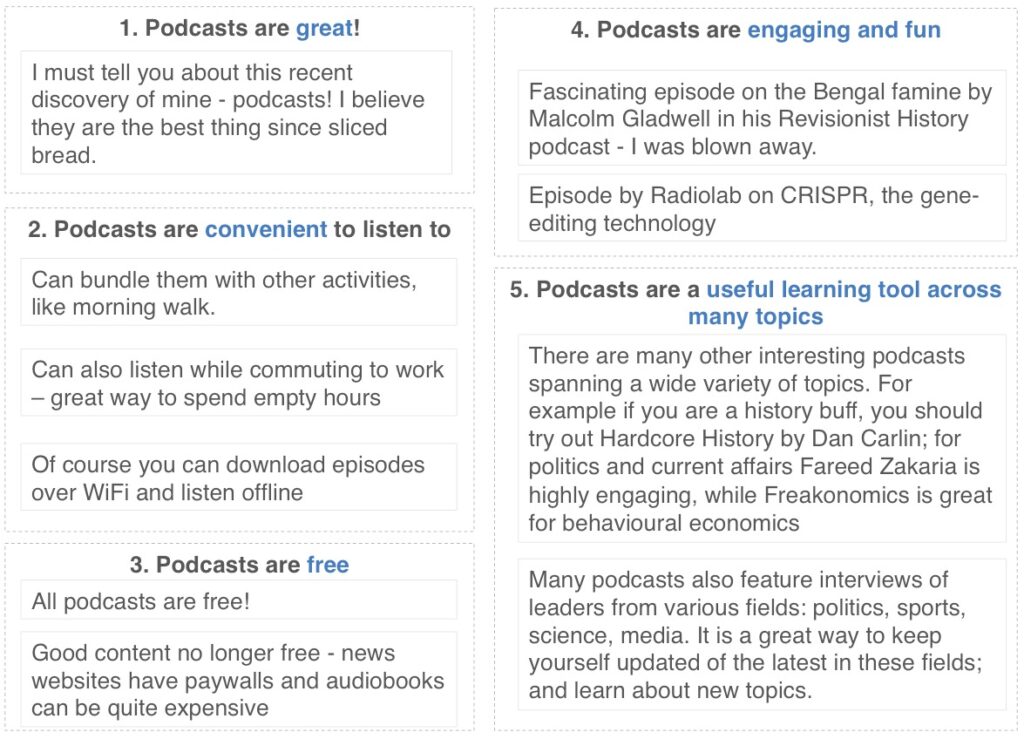
We then derive one main message that summarises the ideas across all the buckets. Finally, when we organise all the ideas, we realise why this construct is called the Pyramid Principle – because the ideas can be arranged in the form of a pyramid, with the main idea at the top, supported by 3-4 ideas below, which are further supported by more ideas below:
The Pyramid of ideas for the podcast blog
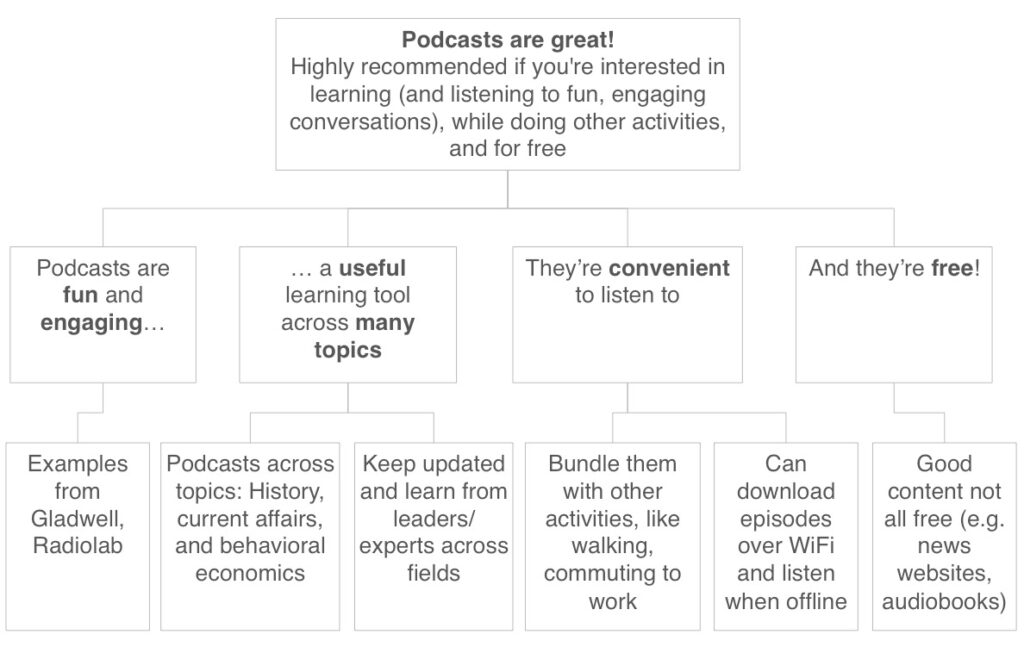
So to summarise, the way to build a pyramid from your ideas is:
- Group your ideas into buckets/themes
- Derive a key message to summarise each bucket
- Derive a main message that summarises the entire set of ideas (the “answer”)
- Figure out the right order for narrating the story – top-down or bottom-up
Of course, the pyramid structure is just the skeleton of your blog post – not the final output. But it lends solid structure to the same. With the structure in place, let’s rewrite the original post:
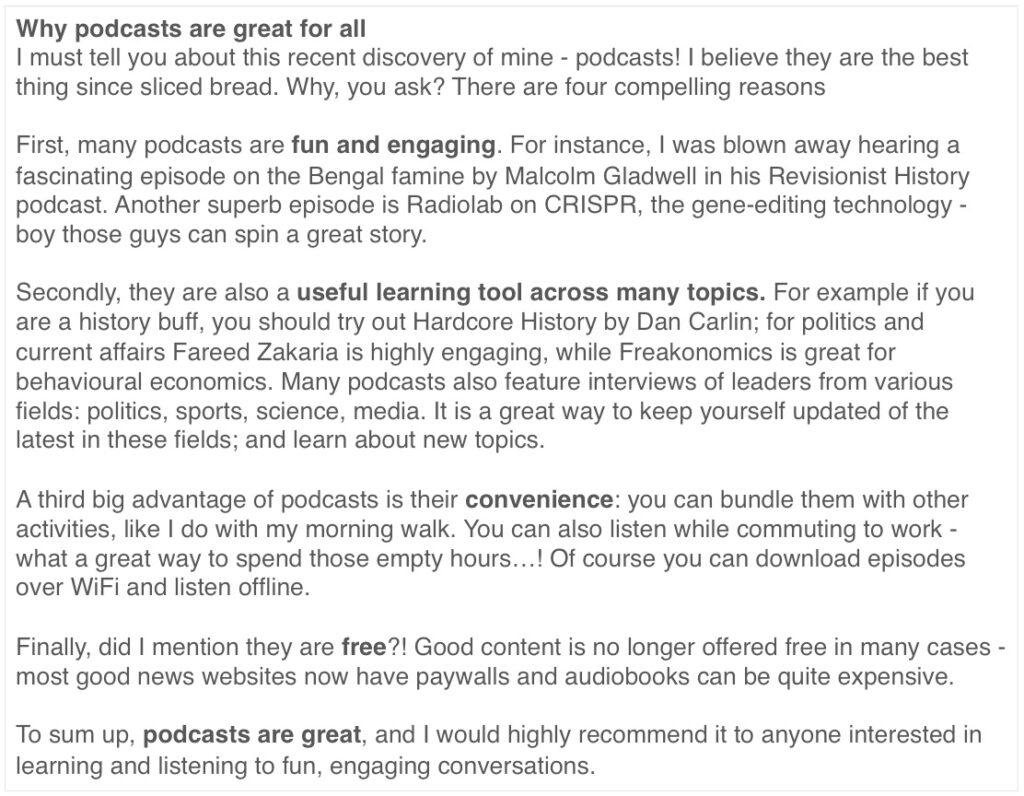
Goes down far easier right?
Why is this tool important?
The Pyramid Principle construct has many advantages in business communication:
- It starts with the answer first: How many presentations have you sat through, emails have you scrolled down, or articles have you read, while asking yourself, “what’s the point of the whole thing?”. By starting with the answer (or the main message) first, you maximise impact in the least amount of time. (Having said that, there are some situations when you don’t start with the answer first; instead you would build your case by taking the audience through the underlying arguments and then stating the main message as the final conclusion. We will tackle this category in another post).
- It’s very audience-time-efficient: If your audience is time-constrained, they can ‘get’ your main arguments by quickly going through the main message and next level support messages – without having to wade through example number 7 and data-point number 15.
- It’s a great diagnostic for your own thinking: Once you apply the framework to your ideas, you are likely to find chinks in them, which you can iron out before publishing.
*****
Hat-tip to Sriram, who introduced me to this tool.
In case you have a presentation/communication that you’d like to put under the Pyramid treatment, send it off – happy to give my thoughts!






